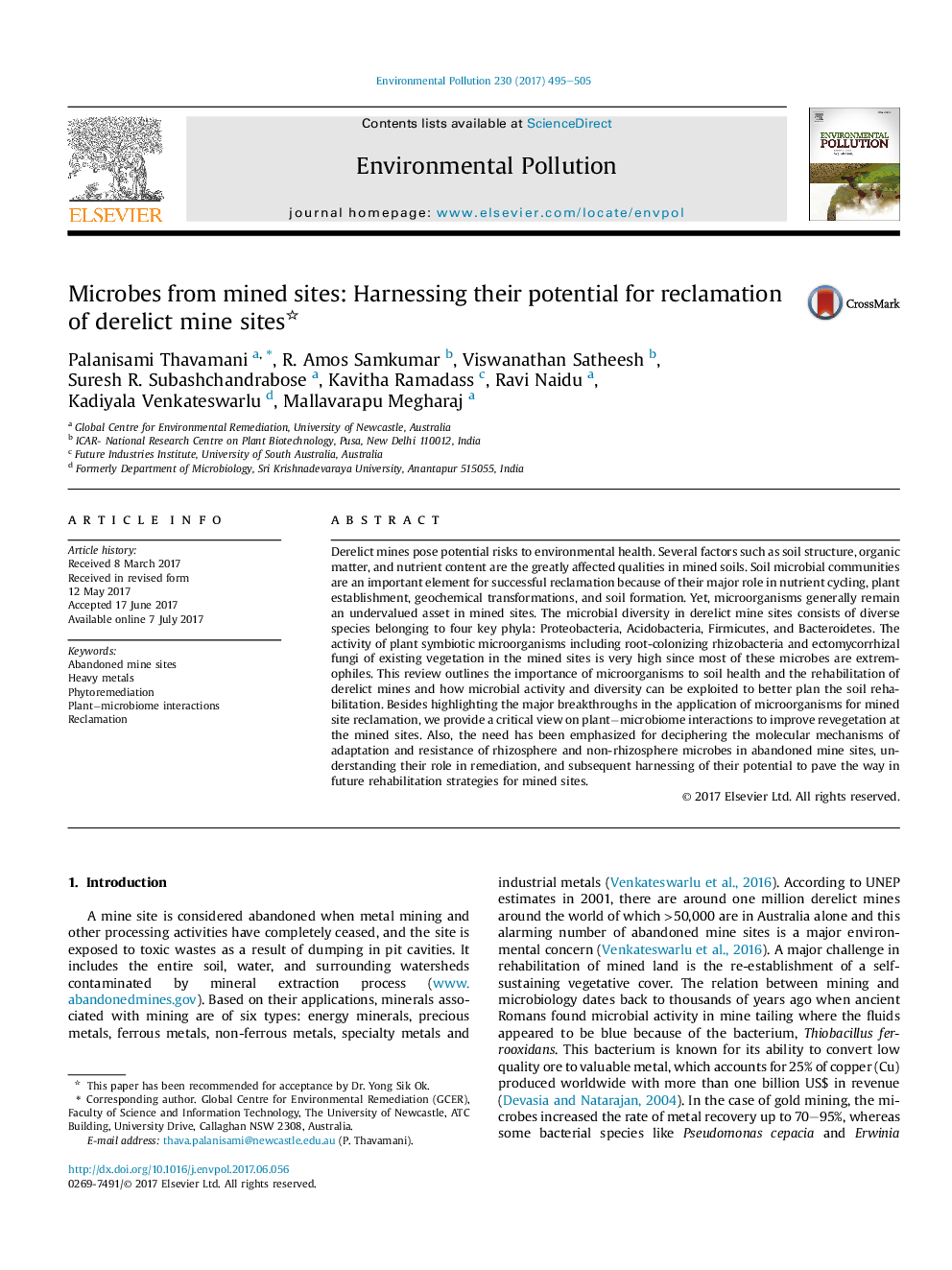| Article ID | Journal | Published Year | Pages | File Type |
|---|---|---|---|---|
| 5748642 | Environmental Pollution | 2017 | 11 Pages |
â¢Abandoned mines pose potential risks to human and environmental health.â¢Re-establishment of a self-sustaining vegetative cover at derelict mines is a major challenge.â¢Soil microbial communities are very important for successful reclamation of mined sites.â¢Role of microorganisms in soil function in derelict mines needs to be understood.
Derelict mines pose potential risks to environmental health. Several factors such as soil structure, organic matter, and nutrient content are the greatly affected qualities in mined soils. Soil microbial communities are an important element for successful reclamation because of their major role in nutrient cycling, plant establishment, geochemical transformations, and soil formation. Yet, microorganisms generally remain an undervalued asset in mined sites. The microbial diversity in derelict mine sites consists of diverse species belonging to four key phyla: Proteobacteria, Acidobacteria, Firmicutes, and Bacteroidetes. The activity of plant symbiotic microorganisms including root-colonizing rhizobacteria and ectomycorrhizal fungi of existing vegetation in the mined sites is very high since most of these microbes are extremophiles. This review outlines the importance of microorganisms to soil health and the rehabilitation of derelict mines and how microbial activity and diversity can be exploited to better plan the soil rehabilitation. Besides highlighting the major breakthroughs in the application of microorganisms for mined site reclamation, we provide a critical view on plantâmicrobiome interactions to improve revegetation at the mined sites. Also, the need has been emphasized for deciphering the molecular mechanisms of adaptation and resistance of rhizosphere and non-rhizosphere microbes in abandoned mine sites, understanding their role in remediation, and subsequent harnessing of their potential to pave the way in future rehabilitation strategies for mined sites.
Graphical abstractDownload high-res image (392KB)Download full-size image
